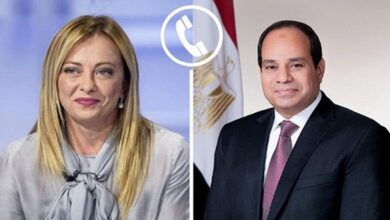The al-Sabah Collection: Art of the Islamic Civilization is currently in its world premiere at the Royal Palace (Palazzo Reale) in Milan, Italy until 30 January, 2011. The exhibition includes 350 pieces belonging to the collection of Sheikh Nasser Sabah al-Ahmas al-Sabah and his wife, Sheikha Hussah Sabah al-Salem al-Sabah of Kuwait.
Works of art, precious objects, currency, carpets, ceramics, necklaces and manuscripts, representing over a thousand years of Islamic art from Spain to China, are displayed together chronologically and thematically for the first time.
The two collectors and owners started developing the al-Sabah collection in the 1960s, gathering more than 30,000 objects from every geographic area and period of the Islamic world, “in all media from ceramics to wood, and from glass to manuscript.” This private treasure was moved in 1983 to the Kuwait National Museum, known as Dar al-Athar al-Islamiyyah (DAI), becoming “the most comprehensive and distinguished collection of Islamic Art in the world.” In 1990, after the invasion of Kuwait, the objects were brought to Baghdad, and later reestablished in the homeland in 1991, with the help of the United Nations.
The first part of the exhibition in Milan presents objects from the 7th century to the development of the 16th century Ottoman Empire, the Safavids of Iran, and the Mughals of the Indian subcontinent, through to the 18th century. The second section is arranged according to a thematic principle, documenting the cornerstones of Islamic art, such as calligraphy, geometrical motifs with abstract floral decorations of arabesques, figurative art, and a section dedicated to currency.
All these objects witness the history of Islam and its relation and artistic influence with the countries to which it came into contact, generating a new and original artistic experience, where “the aim consists of exalting the word of God revealed through the Koran.”
Some of the collection's most impressive objects are the parchment folios from manuscripts of the Koran which are exemplary of the 9th century Kufic style.
Calligraphy, as an Islamic art, is considered to have originated in the 96th sura (chapter of the Koran), which reads, “In the name of God, Most Gracious, Most Merciful/ Read, in the name of your Lord, who created /He created man from an embryo/ Read. And your Lord, Most Exalted, Teaches by means of the pen /He teaches man what he never knew.”
The first Arabic calligraphy was written on parchment or papyrus, and developed into two principle styles, the cursive muqawwar style and the angular masbut style. The sole calligraphy used to transcribe the Koran was the Kufic style, which took its name from the city of Kufa (Iraq), where it was first initiated in the 7th century.
The exhibition’s numismatic (currency) section hosts a copper alloy coin of the “standing caliph” variety (686 – 705 AD) from Syria, one of only ten in the world. After this period coins began to exclusively feature the Koran instead of human representations. On the displayed coin, the caliph is in an upright position, holding a sword against the Byzantine supremacy; up to that time only Byzantine coins were in circulation.
The collection’s Egyptian pieces represent Islamic art between the 14th and 15th century, with a focus on the Mamluk period from 1250 to 1517.
Also of note are a linen caftan with wide sleeves, embroidered with the word “Allah” in Kufic script, which dates to the 11th century; a partial manuscript of the Koran from the 14th century; and a pair of wooden shutters with a geometric star pattern from the 15th century.
The exhibition was produced by the Milan City Council and the Skira publishing house, with the support of Giovanni Curatola, curator of the exhibition and professor of archeology and history of Islamic art at the Universities of Milan and Udine. The al-Sabah Collection: Art of the Islamic Civilization is scheduled to travel to Vienna, Seoul and Canada next on its international tour.




